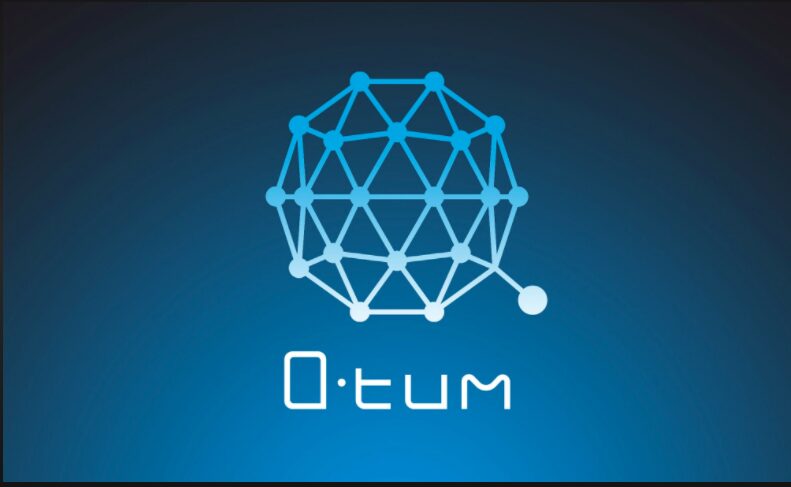Qtum (QTUM) combines Bitcoin’s and Ethereum strengths to create a blockchain platform that supports smart contracts and decentralized applications (dApps). With its hybrid architecture, Qtum bridges the gap between Bitcoin’s security and Ethereum’s smart contract functionality. As the interest in Qtum continues to grow, traders are increasingly turning to automated solutions, like trading bots, to optimize their trades in this unique cryptocurrency market. Argoox provides cutting-edge AI-powered trading bots that can enhance traders’ performance in managing Qtum-based assets.
Automated trading, especially through bots, offers numerous advantages in terms of speed, consistency, and the ability to implement complex strategies without constant human oversight. Argoox‘s article explores the role of Qtum trading bots, how they function, their benefits, and key considerations for using them effectively.
Explanation of Make Qtum (QTUM)
Qtum (QTUM) is known as a blockchain platform designed and developed to support decentralized applications and smart contracts, built on a hybrid structure that combines the security of Bitcoin’s proof-of-work protocol with the flexibility of Ethereum’s Virtual Machine (EVM). The platform is designed for businesses looking to deploy decentralized applications in industries such as finance, healthcare, and supply chain management.
By leveraging both UTXO (Unspent Transaction Output) and account-based models, Qtum achieves scalability and flexibility, making it a versatile blockchain platform for smart contracts. Its native cryptocurrency, QTUM, is used for transactions, staking, and governance within the network.
Qtum is widely recognized for its robust security features, including the use of the PoW mechanism to secure the network and the addition of advanced scripting capabilities for more complex operations. These features make it an appealing option for developers and traders alike.
What is the Role of Make Qtum (QTUM) Trading Bot?
The primary role of a Qtum trading bot is to automate trading processes for traders, ensuring consistent and efficient management of trades without the need for continuous human monitoring. Trading bots can be programmed to perform specific strategies based on market trends, price movements, or technical indicators.
For Qtum traders, these bots can make crucial buy or sell decisions in response to market fluctuations. The automation of trades eliminates the emotional biases that human traders often experience, such as fear or greed, and enables more data-driven decisions. A QTUM trading bot’s role is to continuously monitor the market, execute trades at precise moments, and follow specific parameters set by the trader, such as price thresholds and stop-loss limits.
In essence, a Qtum trading bot can execute strategies more efficiently, saving time and optimizing trading outcomes.
How Do QTUM Trading Bots Work?
QTUM trading bots work by interacting with exchanges via APIs, pulling data from the markets, analyzing that data, and making decisions based on predefined algorithms. Here’s a step-by-step breakdown of how they operate:
- Market Data Collection: The bot collects real-time market data, including price trends, trading volumes, and other metrics from exchanges through API integrations.
- Data Analysis: The bot applies pre-programmed algorithms to analyze market data. This could involve technical analysis using indicators like RSI (Relative Strength Index), moving averages, or MACD (Moving Average Convergence Divergence).
- Decision Making: Based on the data analysis, the bot decides whether to buy or sell QTUM. It follows a set of parameters that can include price thresholds, volume changes, or specific technical signals.
- Execution of Trades: Once the bot has made a decision, it executes the trade by sending buy or sell orders to the exchange. The bot can also place limit orders, stop-loss orders, and take-profit orders to protect investments and maximize returns.
QTUM trading bots are designed to work continuously, executing trades based on logic and strategy, ensuring efficiency and speed in volatile markets.
Benefits of Using Make Qtum (QTUM) Trading Bots
QTUM trading bots offer numerous advantages for traders, particularly those who aim for automated, data-driven decision-making:
- 24/7 Market Access: Trading bots can operate around the clock, ensuring that opportunities aren’t missed even when the trader is unavailable.
- Increased Efficiency: Bots can execute trades much faster than humans, responding to market changes in real-time and executing buy/sell orders with speed and precision.
- Emotion-Free Trading: By eliminating emotional influences such as fear or greed, bots ensure that decisions are based strictly on data and predefined strategies.
- Strategy Implementation: Bots allow traders to test and implement complex trading strategies, such as scalping, trend following, and arbitrage, all of which are hard to do manually.
- Consistency: Bots execute trades consistently based on the parameters set by the trader, removing the risk of impulsive decisions.
What Are Best Practices for QTUM Trading Bots?
To maximize the potential of QTUM trading bots, certain best practices should be followed:
- Start Small: Begin with a small investment to test the bot’s performance before scaling up.
- Risk Management: Set stop-loss orders and other risk parameters to prevent excessive losses.
- Regular Monitoring: While trading bots can operate independently, it’s important to monitor their performance periodically and adjust strategies as needed.
- Optimize Strategies: Continuously fine-tune the trading strategies based on market conditions and performance data.
- Choose Reliable Bots: Use trusted, well-tested bots and ensure that they are secure and offer the necessary features for your strategy.
How to Make a Qtum (QTUM) Trading Bot with a Code Example?
Creating a trading bot for Qtum (QTUM) involves combining cryptocurrency trading APIs, programming knowledge, and a well-thought-out strategy. Below is a complete guide to making a QTUM trading bot using Python. We’ll use Binance API as an example exchange since it supports QTUM trading.
Prerequisites:
- Basic Requirements:
- Python is installed on your system.
- Binance account with API Key and Secret.
- Python libraries: ccxt, pandas, numpy, ta, and matplotlib (install via pip).
- APIs:
- Binance API (other exchanges that support QTUM can be used similarly).
- Trading Strategy:
- We’ll implement a simple moving average crossover strategy:
- Buy when the short-term moving average crosses upper the long-term moving average.
- Sell when the short-term average crosses under the long-term average.
- We’ll implement a simple moving average crossover strategy:
Step-by-Step Code Example for a Qtum (QTUM) Trading Bot:
Install Required Libraries
Run this in your terminal:
pip install ccxt pandas numpy matplotlib taImport Libraries and Configure the Bot
Create a Python script, for example, qtum_trading_bot.py:
import ccxt
import pandas as pd
import time
import datetime
import numpy as np
import ta # Technical analysis library for indicators
import matplotlib.pyplot as plt
# Step 1: Configure API Keys and Exchange
api_key = "YOUR_BINANCE_API_KEY"
api_secret = "YOUR_BINANCE_API_SECRET"
# Initialize Binance Exchange
exchange = ccxt.binance({
'apiKey': api_key,
'secret': api_secret,
'enableRateLimit': True
})
# Trading Parameters
symbol = 'QTUM/USDT' # Trading pair
timeframe = '5m' # Timeframe (5-minute candles)
short_window = 9 # Short moving average
long_window = 21 # Long moving average
order_size = 1 # Number of QTUM to buy/sell
Function to Fetch Historical Data
Fetch OHLCV (Open, High, Low, Close, Volume) data for QTUM.
def fetch_ohlcv(symbol, timeframe, limit=100):
try:
data = exchange.fetch_ohlcv(symbol, timeframe, limit=limit)
df = pd.DataFrame(data, columns=['timestamp', 'open', 'high', 'low', 'close', 'volume'])
df['timestamp'] = pd.to_datetime(df['timestamp'], unit='ms')
return df
except Exception as e:
print(f"Error fetching data: {e}")
return None
Calculate Moving Averages
Use the ta library to calculate moving averages.
def apply_moving_averages(df, short_window, long_window):
df['short_ma'] = ta.trend.sma_indicator(df['close'], window=short_window)
df['long_ma'] = ta.trend.sma_indicator(df['close'], window=long_window)
return df
Define Trading Logic
Implement buy and sell conditions.
def generate_signals(df):
df['signal'] = 0 # 0 means no signal
df.loc[df['short_ma'] > df['long_ma'], 'signal'] = 1 # Buy signal
df.loc[df['short_ma'] < df['long_ma'], 'signal'] = -1 # Sell signal
return df
Place Orders on Binance
Define functions to place buy and sell orders.
def place_order(symbol, order_type, amount):
try:
if order_type == 'buy':
order = exchange.create_market_buy_order(symbol, amount)
print(f"BUY Order placed: {order}")
elif order_type == 'sell':
order = exchange.create_market_sell_order(symbol, amount)
print(f"SELL Order placed: {order}")
except Exception as e:
print(f"Error placing order: {e}")Main Trading Loop
Fetch data, check signals, and place orders in a loop.
def main():
print("Starting QTUM Trading Bot...")
position = False # Tracks whether we hold a position
while True:
try:
# Step 1: Fetch data and calculate indicators
df = fetch_ohlcv(symbol, timeframe)
df = apply_moving_averages(df, short_window, long_window)
df = generate_signals(df)
# Step 2: Get the last row for current signal
last_signal = df['signal'].iloc[-1]
print(f"{datetime.datetime.now()} | Last Signal: {last_signal} | Last Price: {df['close'].iloc[-1]}")
# Step 3: Trading Logic
if last_signal == 1 and not position: # Buy condition
print("Buy Signal Detected")
place_order(symbol, 'buy', order_size)
position = True
elif last_signal == -1 and position: # Sell condition
print("Sell Signal Detected")
place_order(symbol, 'sell', order_size)
position = False
# Step 4: Wait before fetching new data
time.sleep(60) # Check every 1 minute
except Exception as e:
print(f"Error in main loop: {e}")
time.sleep(60)
if __name__ == "__main__":
main()Explanation of the Code:
- API Integration:
- We use ccxt to connect to Binance and fetch market data.
- Indicators:
- Short-Term Moving Average (9-period) and Long-Term Moving Average (21-period) are calculated.
- Trading Logic:
- Buy when the short MA crosses above the long MA.
- Sell when the short MA crosses below the long MA.
- Order Execution:
- Market orders are placed using create_market_buy_order and create_market_sell_order.
- Loop:
- The bot continuously fetches new data, calculates indicators, checks signals, and executes trades.
Output Example:
Starting QTUM Trading Bot...
2024-01-01 12:00:00 | Last Signal: 0 | Last Price: 2.54
2024-01-01 12:05:00 | Last Signal: 1 | Last Price: 2.60
Buy Signal Detected
BUY Order placed: {'info': {...}, 'id': '12345'}
2024-01-01 12:10:00 | Last Signal: -1 | Last Price: 2.58
Sell Signal Detected
SELL Order placed: {'info': {...}, 'id': '12346'}Tools, Libraries, and Technologies Used in Make Qtum (QTUM) Trading Bot
- Programming Language: Python or JavaScript is commonly used for building trading bots.
- Cryptocurrency Exchange APIs: Popular exchanges such as Binance, Coinbase Pro, and Kraken offer APIs to interact with their platforms.
- ccxt Library: This Python library provides a unified way to interact with multiple cryptocurrency exchanges.
- WebSocket: Used for real-time price updates.
- SQLite or MongoDB: Used to store trading data and logs for analysis.
- Backtesting Frameworks: Libraries like Backtrader or QuantConnect can be used to backtest strategies.
What Are the Key Features to Consider in Making a Qtum (QTUM) Trading Bot?
- Real-time Data Access: A trading bot needs to access live market data to make timely decisions.
- Customizable Strategies: The ability to define and tweak trading strategies to match market conditions.
- Risk Management Tools: Including stop-loss, take-profit, and margin features to manage risk.
- API Integration: Seamless integration with multiple exchanges.
- Backtesting Capabilities: Ability to test strategies on historical data to evaluate performance.
- Scalability: The bot should be able to handle high-frequency trading without performance degradation.
What Are Different Types of QTUM Trading Bots?
- Arbitrage Bots: These bots take advantage of price discrepancies across different exchanges by buying at a lower price and then selling it with a higher one.
- Trend Following Bots: These bots analyze market trends and execute buy/sell orders in the direction of the prevailing trend.
- Scalping Bots: These bots focus on making small profits through frequent trades by exploiting small price movements.
- Market Making Bots: These bots provide liquidity to the market by placing trade orders (buy and sell) at certain price levels.
- Smart Order Routing Bots: These bots find the best available prices across various exchanges to execute the trade.
Advantages and Disadvantages of Using Make Qtum (QTUM) Trading Bots
Advantages:
- Automation: Bots operate continuously without human intervention.
- Speed: They can execute trades faster than a human trader.
- Consistency: Bots follow predefined strategies consistently without emotional influence.
Disadvantages:
- Technical Complexity: Setting up and maintaining a trading bot requires technical knowledge.
- Market Risks: Bots follow algorithms, but they can’t predict unforeseen market events.
- Dependence on Technology: Bots are reliant on stable internet and API connections, which can fail.
Challenges in Building QTUM Trading Bots
- Market Volatility: The crypto market’s nature is unpredictable, which can affect bot performance.
- Latency: High-frequency trading bots need low latency to make decisions in real-time.
- Overfitting: Bots that are overly fine-tuned to past data may not perform well in changing market conditions.
- Security: Ensuring that the bot’s API keys and data are secure is essential to avoid breaches.
Are Qtum (QTUM) Trading Bots Safe to Use?
Qtum trading bots, like all cryptocurrency trading tools, come with inherent risks. However, as long as you use reputable bots and take the necessary precautions (e.g., secure API keys, two-factor authentication), the risks can be mitigated. Always ensure that the bot is tested in a safe environment before using it with real funds.
Is It Possible to Make a Profitable Qtum (QTUM) Trading Bot?
Yes, it is possible to create a profitable QTUM trading bot, but success depends on several factors, such as the quality of your strategy, market conditions, and risk management techniques. Backtesting strategies and continuous optimization are essential for increasing the bot’s profitability.
Conclusion
Qtum trading bots offer a valuable solution for anyone looking to enhance their trading efficiency. With the ability to automate trades, reduce human error, and operate continuously, these bots are an essential tool in modern cryptocurrency trading. However, it’s important to ensure the strategies are well-developed and regularly optimized. Argoox provides advanced AI trading bots that can assist in making more informed, profitable trading decisions. Visit Argoox today to explore how these bots can improve your trading performance in the Qtum market and beyond.




